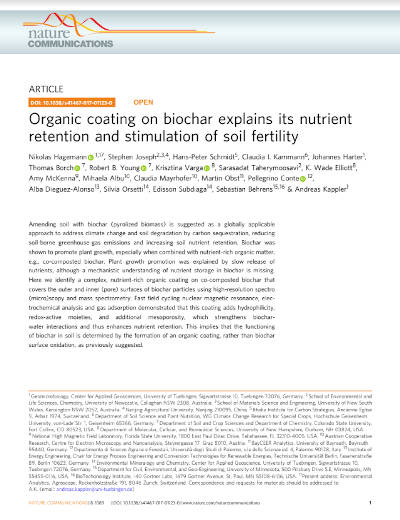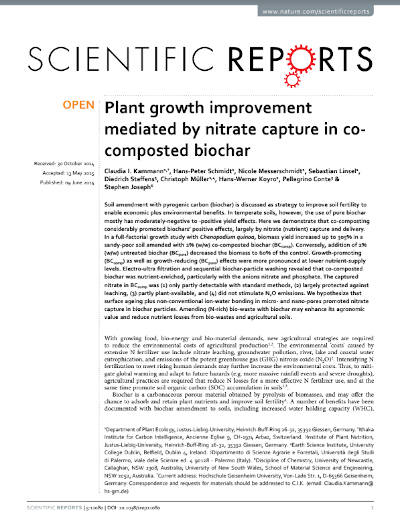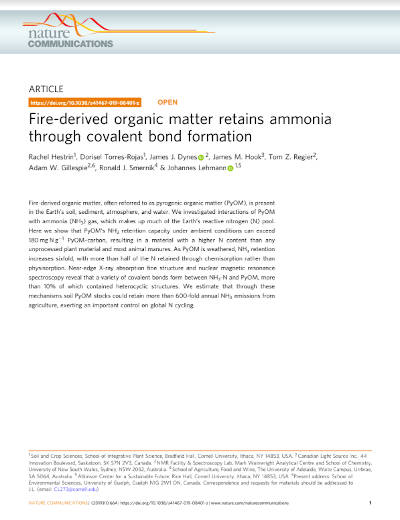Studies
Organic coating on biochar explains its nutrient retention and stimulation of soil fertility
Biochar picks up a complex porous coating of biochemically active material when it is sent through the composting process. This coating also forms when the char ages in soil, but much more slowly. This coating consists of decomposition products, biofilms, and results from intimate contact with the microbiome of compost or soil. The properties of the coating appear to explain the nutrient retention of co-composted biochar and stimulation of soil fertility.
Among the qualities that this coating exhibits are excellent water retention, high ion exchange capacity, and abundance of electron accepting and electron donating sites. In fact the magnitude of these qualities even surpass that of compost itself. The coating that forms on char in this manner clogs the micropores which lend much surface area to the biochar, but introduces an entirely new layer of mesopores where interactions with soil life and nutrient exchange occurs.
Plant growth improvement mediated by nitrate capture in co-composted biochar
Whereas the addition of pure, untreated biochar as a soil amendment was observed to have a negative effect on soil—2% by weight added biochar redulced quinoa yields by 60%—, amending the soil at a rate of 2% co-composted biochar increased yields quinoa yields by over 300%. Analysis and examination of the biochar particles revealed that co-composted biochar was nutrient-enriched, particularly with the anions nitrate and phosphate. The captured nitrate was largely protected against leaching while being mostly available to plants.
At the same time, the captured nitrates did not stimulate N2O emissions. The co-composting process seems to increase the fertilizer value of the biochar in the form of loading it with captured plant-available nitrates, without increasing the harmful emissions typically associated with high levels of nitrates.
Synergisms between Compost and Biochar for Sustainable Soil Amelioration
The addition of biochar to compost benefits the composting process and dramatically improves the agronomic value of the biochar. Biochar reduces emissions from compost, increases the temperature of composting, and results in more thorough composting and a longer lasting end product, while the composting process conditions the biochar to have better water retention, nutrient exchange, acid/base buffering, and loads it with plant nutrients and beneficial microbes. Even modest application rates were observed to have significant observed benefits.
Fire-derived organic matter retains ammonia through covalent bond formation
Charcoal (“fire derived organic matter”) was found to be able to retain stunningly large quantities of ammonia, such that the resulting material retains more nitrogen than any unprocessed plant material and even most manures. As the char is weathered (as it oxidizes and is transformed by exposure to conditions in the soil) its ammonia retention increases sixfold.
Surprisingly, over half of that ammonia actually reacts with the char and bonds to it, and isn’t merely adsorbed onto the surface area of the char. The amount of ammonia that charcoal can retain is proportionally so large that char has the potential to radically abate ammonia emissions from agriculture.














